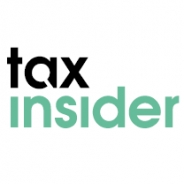
For some time it has been possible for employers to provide employees with vouchers enabling them to access childcare, and this benefit is tax-free up to a certain limit – currently £55 per week – but the rules for childcare vouchers are about to change, as James Bailey explains.
Introduction
£55 tax free is of course worth more to a 40% taxpayer than to a 20% taxpayer, and still more to a 50% ‘fat cat’, so you will be delighted to hear that HMRC have come up with a ’fair‘ way to reduce the level of these childcare benefits for higher earners.
20% taxpayers will still receive their £55 of vouchers tax free, but those paying 40% tax can only have £28 worth, and 50% taxpayers only get £22.
The announcement from HMRC then goes on to describe how the employer is to decide how much tax free childcare can be provided, and it is here we enter the world of make-believe and leave common sense far behind.
The Calculations
How does the employer work out which rate to use for an employee? Does he look at the rate of tax he deducts from their pay? No – he does a ’Basic Earnings Assessment‘ (BEA) at the beginning of each tax year. He adds up the following:
- Basic pay;
- Guaranteed bonuses;
- London weighting or other regional allowances;
- Taxable benefits; and
- Shift allowances
He ignores discretionary bonuses, overtime, and (if the employee concerned is also a shareholder) dividends. On the basis of this deeply flawed calculation, the rate of tax free vouchers is fixed for the tax year, and if it turns out later that the employee is in fact a 40% taxpayer when the BEA said they were entitled to £55 per week, there is no clawback, and the excess vouchers are not charged to tax.
All that happens is that when the BEA is done for the next tax year (they must be done each year) it may be the case that the level of vouchers is reduced for the following year – or it may not, given the inherent inaccuracy of the BEA.
Let us look at some examples of how ’fairly‘ this system will operate for people who join childcare schemes after 5 April 2011 (if you’re already in the scheme at that date you can carry on receiving your £55 no matter what your earnings).
Mary Hardwork
Mary is a head teacher, and her salary means she is a 40% taxpayer on a small part of her income. She will only get £28 worth of tax free vouchers.
Clarissa Hobbyjob
Clarissa is an heiress. The money her father left to her, invested in offshore bonds, brings in approximately £200,000 per year, but this is ignored for the purposes of the BEA performed by her old school friend Samantha, in whose designer clothes shop she works for three afternoons a week in order to amuse herself and keep up with the latest fashion trends. Her low earnings for this work mean that Samantha can provide her with £55 tax free childcare vouchers each week. “What a hoot!” said Samantha when Clarissa explained the idea to her.
Wendy Welladvised
Wendy runs her own company, providing PR services. She is expecting a baby in May 2011, and after talking things over with her accountant, decides to cut her salary to just £6,000 per year. She will also take dividends on her shares in her company, of £150,000 per year – but as these are not part of the BEA she must perform on herself, she can have the company provide her with £55 worth of vouchers.
I do so admire fairness, don’t you?
Practical Tip
Take professional advice or investigate your circumstances thoroughly so that, like Wendy Welladvised, you maximise your options to ensure that you benefit from the new rules when and where you can.



Please register or log in to add comments.
There are not comments added